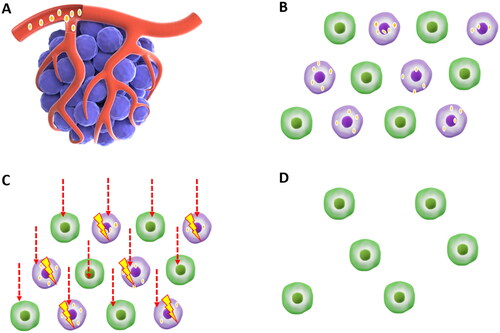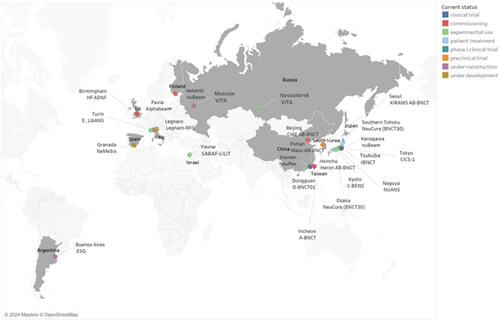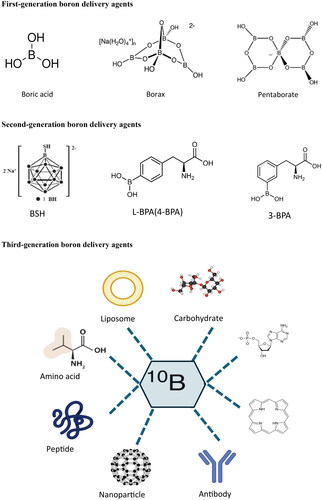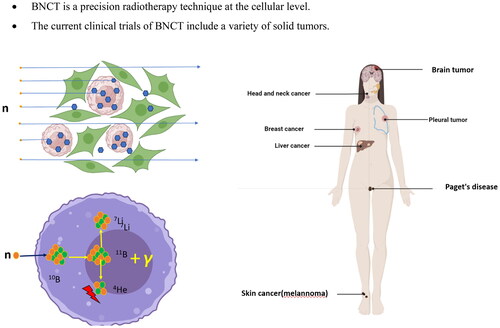Figures & data
Figure 1. Mechanisms of BNCT in cancer.
Patients were injected intravenously with a boron delivery agent before and sometimes during treatment (A). Cancer cells selectively absorb the boron-delivery agent with little uptake by normal tissues (B). The boron nucleus absorbs neutrons and undergoes nuclear fission, yielding an alpha particle and a 7Li. The range of the particle is 4-7 μm, equal to the diameter of a cell (C). Tumor cells were eliminated following BNCT therapy without causing considerable damage to normal tissue cells (D).

Figure 2. Global AB-BNCT projects: operational status of completed and under-construction facilities.
The figure illustrates the operational status of accelerator-based boron neutron capture therapy (AB-BNCT) projects worldwide that have been completed or are currently under construction. The data used to create this figure was obtained from the official website of the International Society for Neutron Capture Therapy (ISNCT) and is current as of the end of 2022.

Figure 3. Classification and structures of boron delivery agents for BNCT.
This figure illustrates the development of boron delivery agents for BNCT across three generations. The first-generation compounds, such as boric acid, borax, nanoparticles, and pentaborates, had low tumor selectivity and accumulation. The second generation introduced the clinically successful BPA and BSH, which exhibited improved tumor targeting and lower toxicity than the first generation. The third generation enhances tumor specificity and boron delivery by conjugating BPA and BSH with tumor-targeting moieties. These include amino acids, peptides, antibodies, porphyrins, liposomes, and oligonucleotides.

Table 1. Globally registered clinical trials of Reactor-based BNCT¶.
Table 2. Globally registered clinical trials of AB-BNCT.
Table 3. BNCT clinical trial of head and neck squamous cell carcinoma.
Table 4. Clinical outcomes of RB-BNCT in the treatment of newly diagnosed and recurrent GBM.
IctrpResults.csv
Download Comma-Separated Values File (155 KB)Graphical Abstract(clean).docx
Download MS Word (420 B)Highlights(clean).docx
Download MS Word (412 B)Data availability statement
These data are made available upon request.

